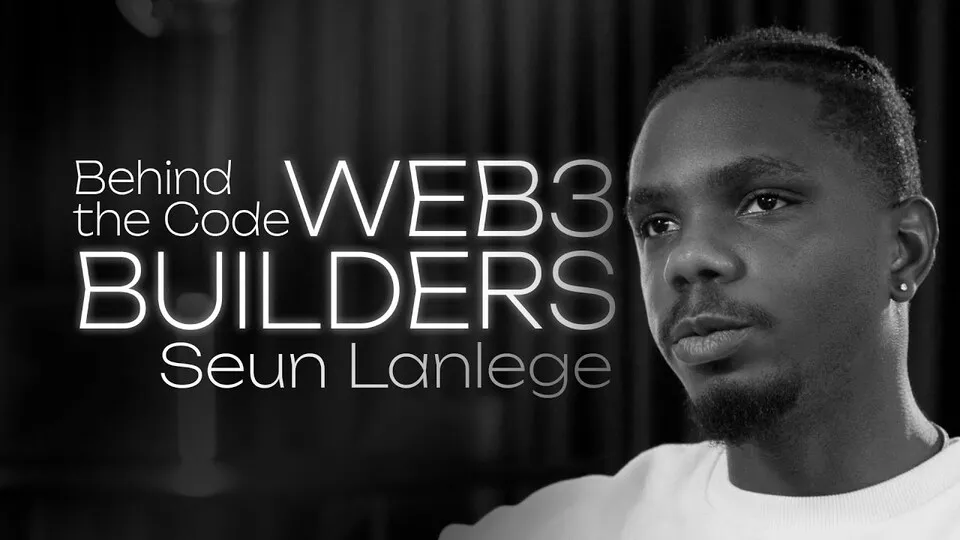Secure cross-chain communication has become a critical component of a truly decentralized ecosystem. As blockchains proliferate, each tailored to specific use cases and functionalities, the need for interoperability—the ability for these disparate systems to communicate and transact with one another—has grown increasingly urgent. Hyperbridge, a project spearheaded by Seun Lanlege, seeks to address this challenge by providing a secure, scalable, and efficient solution for cross-chain communication. In this article we bring you a summary of the latest episode of Behind the Code by Key Pictures, distributed by The Kusamarian, revealing all the details about Polkadot Hyperbridge.
The Vision Behind Hyperbridge
Seun Lanlege, the founder of Polytope Labs, has long been a visionary in the blockchain space, recognizing early on the limitations of isolated blockchain networks. His work on Hyperbridge is driven by the belief that for blockchain technology to realize its full potential, it must evolve beyond the confines of individual chains. Hyperbridge aims to be the cryptoeconomic co-processor that enables secure and seamless communication between multiple blockchain networks, laying the groundwork for a more interconnected and interoperable future.
Hyperbridge is not just another bridge solution; it is designed to be a foundational layer that provides cryptographic security for cross-chain messages. By aggregating messages from multiple chains into a single, verifiable proof, Hyperbridge reduces the complexity and cost associated with cross-chain interactions. This approach is akin to how Polkadot facilitates interoperability among parachains, but with greater flexibility and efficiency.
The Need for Secure Cross-Chain Communication
One of the most significant challenges in the current blockchain landscape is the lack of secure and reliable cross-chain communication. Many existing solutions rely on intermediaries—third parties that attest to the state of one blockchain on another. While functional, this architecture has proven to be a significant vulnerability, with billions of dollars lost to bridge exploits and hacks. As Seun Lanlege points out, approximately one-third of all crypto-related hacks have involved bridges, making security a paramount concern.
Hyperbridge addresses this issue head-on by eliminating the need for intermediaries. Instead, it leverages cryptographic proofs to authenticate the source and validity of messages across chains. These proofs, while inherently expensive to verify on traditional blockchains like Ethereum, are optimized in Hyperbridge to be more efficient and cost-effective. This innovation not only enhances security but also makes cross-chain communication more accessible to a broader range of blockchain networks.
How Hyperbridge Works
At its core, Hyperbridge functions as a co-processor that aggregates cross-chain messages into a single, compact proof. This proof can then be verified by any blockchain network that needs to process these messages. The key innovation here is the ability to generate a much cheaper proof that still attests to the validity of cross-chain messages. This is particularly beneficial for blockchains with constrained computational resources, such as those based on the Ethereum Virtual Machine (EVM), where gas costs can be prohibitively high.
Hyperbridge’s architecture is designed to be scalable and efficient, allowing it to handle varying levels of cross-chain traffic. During periods of high activity, Hyperbridge can dynamically allocate computational resources to ensure that messages are processed promptly. Conversely, during quieter periods, it can scale down its operations to conserve resources. This elastic scaling capability is critical for maintaining the efficiency and responsiveness of the system.
Comparison of Hyperbridge with Existing Solutions
What sets Hyperbridge apart from other interoperability solutions is its emphasis on security and decentralization. Unlike many existing bridges that require blockchains to surrender some level of sovereignty to a centralized consensus mechanism, Hyperbridge allows each blockchain to maintain its own consensus model. As long as Hyperbridge can track and verify this consensus, it can facilitate secure communication across different networks.
This approach contrasts with that of Polkadot, where parachains must adhere to a shared consensus mechanism to enable interoperability. Hyperbridge offers a more flexible alternative, allowing blockchains to retain their unique characteristics while still benefiting from secure cross-chain communication. This flexibility makes Hyperbridge an attractive option for a wide range of blockchain networks, from highly decentralized public chains to more centralized, enterprise-oriented solutions.
Hyperbridge Applications and Use Cases
The potential applications of Hyperbridge are vast and varied. One of the most promising areas is decentralized finance (DeFi), where secure cross-chain communication is essential for the efficient movement of assets between different liquidity hubs. By enabling secure and cost-effective bridging of assets, Hyperbridge can help address the issue of liquidity fragmentation, a significant challenge in the DeFi space.
Another critical application is in the development of cross-chain decentralized applications (dApps). As blockchain technology continues to evolve, the need for dApps that can operate across multiple chains will only grow. Hyperbridge provides the infrastructure necessary for developers to build these multi-chain applications, unlocking new possibilities for innovation and user experience.
For instance, a DeFi protocol could use Hyperbridge to enable users to seamlessly move assets between Ethereum, Binance Smart Chain, and Polkadot, without worrying about the security risks associated with traditional bridge solutions. Similarly, a gaming dApp could leverage Hyperbridge to facilitate real-time interactions between players on different blockchain networks, creating a more immersive and interconnected gaming experience.
The Future of Polkadot Hyperbridge
Looking ahead, Seun Lanlege envisions a future where Hyperbridge becomes the de facto standard for secure cross-chain communication. While the project is still in its early stages, the foundational architecture is designed to be stable and reliable, with minimal changes needed as it scales. This stability is crucial for gaining the trust of users and developers, who need a dependable platform on which to build their cross-chain applications.
Lanlege also sees Hyperbridge playing a pivotal role in the broader movement towards decentralization. As more companies and organizations explore the potential of decentralized autonomous organizations (DAOs), the need for secure and scalable cross-chain communication will become even more critical. Hyperbridge is well-positioned to meet this demand, providing the infrastructure necessary for DAOs to coordinate and operate across multiple blockchain networks.
Moreover, as the blockchain space continues to mature, the importance of interoperability will only increase. Lanlege believes that the future of blockchain is multi-chain, with different networks serving different purposes but all interconnected through secure communication protocols like Hyperbridge. This vision aligns with the broader trend towards decentralization and the democratization of technology, where power is distributed across a network rather than concentrated in a single entity.
Hyperbridge Final Thoughts
Seun Lanlege’s work on Hyperbridge represents a significant step forward in the quest for secure and scalable cross-chain communication. By eliminating the need for intermediaries and leveraging cryptographic proofs, Hyperbridge provides a robust and efficient solution for interoperability between blockchain networks. As the blockchain ecosystem continues to grow and evolve, the importance of projects like Hyperbridge cannot be overstated.
With its focus on security, scalability, and flexibility, Hyperbridge is poised to become a key player in the future of blockchain technology. Whether in DeFi, gaming, or the development of DAOs, Hyperbridge offers the infrastructure needed to build the next generation of decentralized applications. As more developers and organizations recognize the potential of this innovative solution, Hyperbridge is likely to play a central role in the continued evolution of the blockchain space.
In conclusion, Seun Lanlege‘s vision for Hyperbridge is not just about solving the immediate challenges of cross-chain communication; it is about laying the groundwork for a more interconnected, secure, and decentralized future. Through projects like Hyperbridge, the blockchain community is taking significant strides towards realizing the full potential of this transformative technology.








